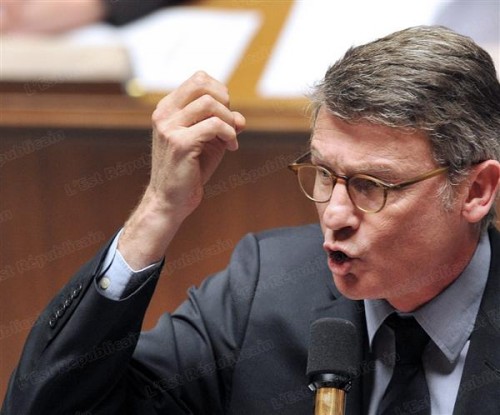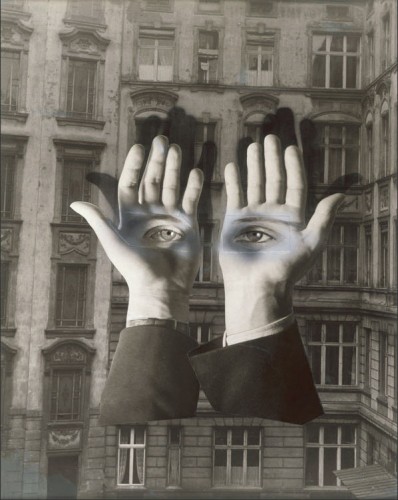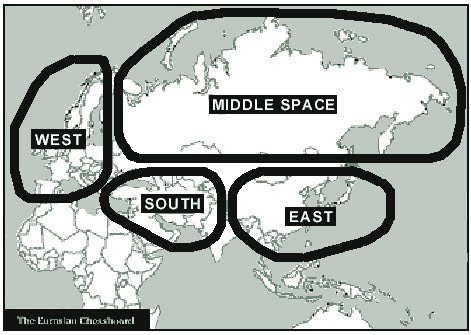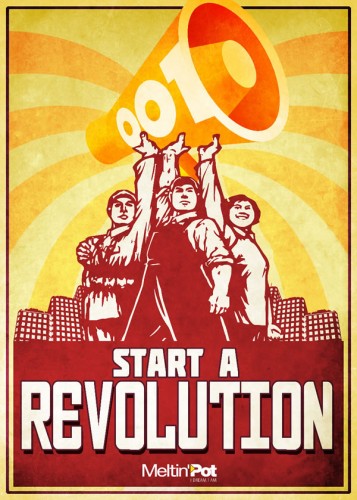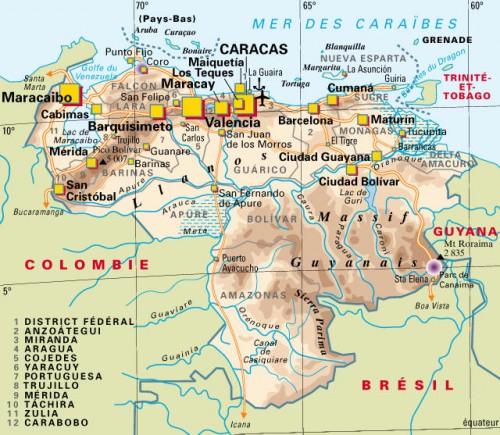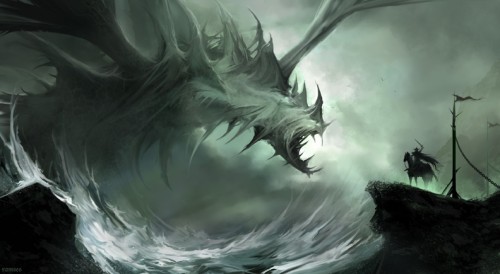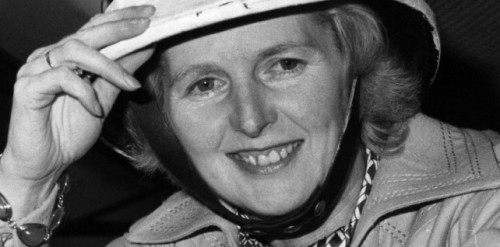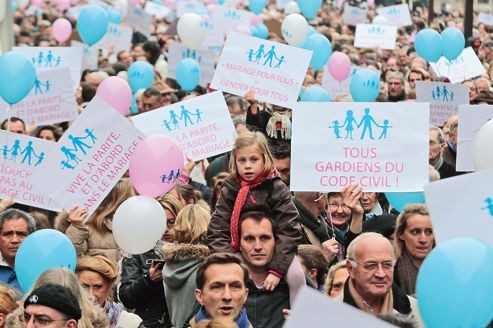Bryan Magee’s The Tristan Chord: Wagner and Philosophy (just Wagner and Philosophy in the UK) combines two of my favorite subjects into an informative, stimulating, and highly readable book. Creativity and critical reflection are two very different activities, and excellence in one is seldom accompanied by excellence in the other. Thus Richard Wagner was virtually unique because he was both a great artist and a serious intellectual.
First of all, Wagner had a remarkably facility for reflection on both his own art and art in general, which he poured into a large number of books and essays on music and drama. Wagner was also widely read in mythology, religion, history, politics, and—at the very pinnacle of difficulty and abstraction—philosophy.
Wagner’s greatest philosophical influences were Ludwig Feuerbach and Arthur Schopenhauer, particularly the latter. Furthermore, Wagner did not merely read these philosophers. He understood them profoundly and incorporated their teachings into the living substance of his greatest artistic achievements.
Sometimes theories can get in the way of authentic artistic expression. But not so with Wagner, for when he read Feuerbach and especially Schopenhauer, they did not so much furnish his mind with new ideas as articulate and thus strengthen the intuitions that he held all along. Philosophy, in short, was an aid to authentic existence and creativity. It cleared away confusions and impediments and helped Wagner become who he really was.
The Tristan Chord is a fugue that simultaneously follows Wagner’s development in four different areas: (1) his operas, (2) his theory of opera, (3) his political thought, and (4) his philosophy of life. (Unkind reviewers would say that the book jumps around and repeats itself a lot.)
The Operas
For our purposes, Wagner’s 13 operas fall into four groups.
First, there are what could be called Wagner’s juvenilia: Die Feen (The Fairies), Das Liebesverbot (The Ban on Love), and Rienzi. The common denominator of these works is that they were deliberate, self-conscious attempts to write in a particular style. Die Feen is a German Romantic opera in the style of Weber. Das Liebesverbot is an Italianate opera in the style of Bellini. Rienzi is a Parisian Grand Opera in the vein of Meyerbeer.
Wagner later repudiated these operas as calculating, commercial, and thus inauthentic. But, as Magee points out, for all that, they are still good. Die Feen and Das Liebesverbot were written when Wagner was 19 and 20, and Magee correctly remarks that they are better than anything Mozart or Verdi composed at that age. Furthermore, Rienzi is better than anything by Meyerbeer. Although Wagner expressly excluded these works from performance at Bayreuth, they should be performed more regularly, and what better place to do it than the international Wagner festival?
The next three operas are Wagner’s early mature works: The Flying Dutchman, Tannhäuser, and Lohengrin. The common denominator is that they are authentic expressions of Wagner’s mature artistic style, yet they predate Wagner’s theoretical works on opera and drama and his encounters with the philosophies of Feuerbach and Schopenhauer.
Wagner’s middle period consists of the four operas of The Ring of the Nibelung: Das Rheingold, Die Walküre, Siegfried, and Götterdämmerung. These works are deeply marked by Wagner’s early theory of opera, his revolutionary political engagement, and the philosophy of Feuerbach.
Wagner’s final period consists of three operas: Tristan and Isolde, The Mastersingers of Nuremberg, and Parsifal. What unites them is that they reflect Wagner’s mature views on the nature of opera and drama, politics, metaphysics, and the spiritual life, for which Schopenhauer was the indispensable philosophical midwife.
This chronology is somewhat muddled by the fact that although Wagner conceived and wrote the Ring libretto well before he began work on Tristan and Isolde and The Mastersingers, he composed both operas before completing the music for the Ring cycle. Nevertheless, the Ring and the last three operas belong to distinct phases in Wagner’s musical and intellectual development.
The Theory of Opera
Beginning in 1849, Wagner began to elaborate a theory of opera and drama in such books and treatises as The Art Work of the Future (1849), Art and Revolution (1849), Opera and Drama (1850–51), and A Message to My Friends (1851). Twenty years later, Wagner made important changes to his theories in such works as Beethoven (1870) and The Destiny of Opera (1871).
The core of Wagner’s theory of opera are his views of the nature and aesthetic potential of opera. Modern opera was a conscious attempt to revive ancient Greek drama, which had musical accompaniment. Wagner regarded classical Athenian drama as a pinnacle of artistic achievement.
First, classical drama had enormous expressive powers because it combined a whole range of arts, including poetry, music, acting, mime, and even painting and architecture for the staging. This is the idea of the “total work of art,” the Gesamtkunstwerk.
Second, classical drama focused on mythical themes that were shared by the whole community and in which each individual could find personal meaning.
Third, classical dramas were sacred and communal rather than profane, private, and commercial. They were subsidized by the state and performed as part of religious rites in which the whole population took part. Greek drama fused art, religion, and politics. It was a collective, celebratory experience of the community’s self-awareness of its common origins, nature, and destiny. These views remained essentially the same.
What changed were Wagner’s views of the relative importance of music and other dramatic elements within opera. Wagner believed that drama and especially music had made remarkable progress since ancient Greece. Shakespeare was a better dramatist than Aeschylus or Sophocles because he penetrated more deeply into character and motive. And Beethoven had vastly expanded the emotional power of music. But even with these advances, modern opera failed to realize its artistic potential and remained inferior to ancient Greek tragedy. Wagner set out the correct that.
In his early theory of opera, Wagner sought to create a greater unity between words and music by dispensing with the dichotomy between recitative and aria; eliminating purely musical forms, such as the da capo aria, which contained dramatically needless repetitions; dropping dramatically unintegrated showpieces for virtuoso singers; eliminating ensembles for multiple singers which are musically effective but make it impossible to understand the words; clarifying orchestration so that the music did not overwhelm the words, and the like. The aim was to make music and drama entirely complimentary, to compose music that underscores rather than overwhelms our experience of drama. In effect, Wagner was inventing the “soundtrack,” and indeed, Wagner was the single greatest influence on movie scoring. Wagner put this theory into practice in Das Rheingold and the first act of Die Walküre.
But although Wagner was right to prune back some of the musical-dramatic imbalances of earlier forms of opera, he gradually abandoned strict parity between music and words, first by following his own muse and later through his encounter with the aesthetic theory of Arthur Schopenhauer
Schopenhauer argued that music has greater emotional power than all other art forms because it has greater metaphysical depth. Representational art shows us Platonic forms or ideas, whereas music (like sex) offers us direct experience the primal metaphysical reality which Schopenhauer called will.
Wagner’s use of music was analogous to the chorus in Greek drama: but the Greek chorus merely explained the inner meaning of the events represented on stage whereas the orchestra can actually make you feel them; music actually allows one to feel what the characters feel. Magee does, however, point out that Wagner never abandoned the various musical-dramatic innovations of his earlier theoretical works, using them to great effect.
But the music was primary, and indeed, music has always been primary in opera. The flimsiest plots can become absolutely compelling if set to music. And no matter what his theory, Wagner never lost sight of music’s divine and magical powers. Thus even in Das Rheingold, at the very end, he uses pure music to remind us that, for all their corruptions and follies, the gods are still gods.
Indeed, Wagner’s mature, Schopenhauerian operas, Tristan and Isolde, The Mastersingers, and Parsifal, can be seen as evolving out of distinct musical-emotional ideas, just as Schopenhauer believed the world of representation arises out of the primal will. In Tristan the musical-emotional seed is erotic longing. In The Mastersingers it is what I call “generativity,” namely the self-renunciation of the old to foster the next generation. In Parsifal it is what I call “abjection,” the feeling of guilt and the need for absolution, the feeling that mankind is incapable of solving the problems of life without the supplement of some sort of supernatural grace. Furthermore, as the music gained in primacy, the libretti shrank: Tristan and Parsifal have the fewest words among Wagner’s operas, and Parsifal is one of the longest.
Wagner’s Politics
Magee’s discussion of Wagner’s politics aims at refuting the idea that he was some sort of Right-wing proto-fascist.
Magee argues that Wagner a Left-wing revolutionary in his youth. Specifically, Wagner was heavily influenced by the Young Germany movement of Heinrich Laube (1806–1884) and the anarchism of Pierre-Joseph Proudhon (1809–1865) and Mikhail Bakunin (1814–1876).
Wagner’s anarchism valorized a pre-industrial Hobbit-like society of small, independent farmers and craftsmen. The principles of this form of society were nature, which puts limits on acquisition, and love, which puts limits on exploitation. This anarchistic utopia was destroyed by industrialism and usury, creating a miserable, landless proletariat toiling to heap up riches for capitalists. Capitalism is founded on the rejection of love for the pursuit of power and of nature for artifice and the pursuit of unlimited wealth.
Wagner’s critique of capitalism is reflected in the third scene of Das Rheingold, where the Nibelung dwarf Mime laments the loss of the Nibelung’s traditional life as independent craftsmen to his tyrannical brother Alberich, who has forsworn love in order to steal the Rhine gold, from which he fashioned a magic Ring, which he has used to enslave the Nibelungen and make them toil in mines and factories to heap up riches for himself. Wagner hoped that the revolution would break the rule of power and greed and inaugurate a new form of society based on love and nature.
Wagner combined this anarchist-socialist outlook with German nationalism. But, as Magee stresses, German nationalism was, in its time, a Left-wing political cause too. In particular, Wagner was deeply influenced by the Young Germany movement, which preached German national and cultural regeneration after the humiliations of the Napoleonic conquest. They wished to unify Germany under a republican regime. They were also socialists and advocates of sexual freedom.
Magee’s argument, however, hinges on a superficial fixation on the categories of Left and Right as opposed to an appreciation of the substance of Wagner’s positions. Yes, when Wagner was a young man, his German nationalism and critique of capitalism were Left-wing positions. But the substance of Wagner’s anarchism was essentially conservative and backward-looking. Furthermore, Wagner’s combination of nationalism and conservative anti-capitalism is pretty much the paradigm of 20th-century fascism, National Socialism, and their New Right successors. Finally, Wagner surely would have rejected the substance of most of what passes for Left-wing opinion today. There is little doubt that if Wagner were alive today, he would be aligned with the European New Right.
Magee also argues that, contrary to widespread belief, Wagner did not become more conservative as he grew older but merely gave up the idea that politics could solve man’s most important problems. Thus, Magee concludes, Wagner did not embrace conservative politics but merely became apolitical. This argument, however, strikes me as sophistical, for a large part of conservatism is precisely the conviction that the most important problems of life cannot be solved by politics. Furthermore, it ignores the fact that the substance of Wagner’s youthful anarchism was a critique of capitalism from a deeply conservative, anti-modernist perspective
Feuerbach
Ludwig Feuerbach (1804–1872) was the first German philosopher to exercise an important influence on Wagner. Feuerbach was one of the Young or Left Hegelians who accepted Hegel’s basic philosophical framework but argued that Christianity and the modern state, including modern capitalism, are not the end of history and that we can evolve beyond them.
To find a lever and a place to stand in order to critique Hegel’s system, Feuerbach embraced materialism and atheism. Feuerbach argued that gods and religious myths are merely projections and reifications of human nature. Thus, although there are no gods and all religions are false, religion is still deeply important, because it provides insight into human nature.
Wagner embraced Feuerbach’s view of religion when he was writing the Ring, which is the story of the destruction of the gods and the beginning of the age of man. Magee argues that on religious matters, Wagner remained a Feuerbachian for the rest of his life. This is plausible, for even though Schopenhauer convinced Wagner that there is a metaphysical dimension beyond the material world, Schopenhauer himself was an atheist, albeit one who also recognized the importance of religion for gaining insight into human nature.
Nevertheless, I wish that Magee had showed how his thesis is consistent with Wagner’s many remarks on Christianity, particularly those recorded in the diary of his wife Cosima, for they certainly do not sound like the views of an atheist. Wagner clearly wished to sever Christianity from its Jewish and Catholic roots and remake it as a Germanic folk religion, and perhaps he regarded it merely as an exoteric cult in which he did not believe. But if so, he kept up the pretense even in front of his wife.
Moreover, Wagner’s last opera Parsifal, which deals with the knights of the Holy Grail, is definitely not orthodox Christianity in any sense. It even contains elements of Buddhism and Schopenhauer. But for all that, the Grail and the Spear of Longinus still perform magic, and I find it impossible to listen to the music and conclude that Wagner did not believe in that magic.
Feuerbach’s social and political philosophy was largely consistent with Wagner’s pre-existing Young Germanist and anarchist-socialist convictions. As a materialist and atheist, Feuerbach was convinced that nature allows human beings to be happy on earth if they act properly: if they love one another and keep their desires for material goods moderate and within natural bounds. He believed that love was man’s greatest need and satisfaction. He also believed that love makes possible a social order that is free of coercion and exploitation. Injustice arises when human beings reject loving and being loved for the pursuit of power and wealth, transgressing nature’s limits by acquiring unnecessary and excessive material possessions. Revolution is necessary to overthrow the tyrants and exploiters and to institute a more egalitarian society based on love and in harmony with nature.
Wagner first encountered Feuerbach’s writings in the 1840s. His principal works are The Essence of Christianity (1841) and The Principles of the Philosophy of the Future (1843). But Wagner’s most intense engagement with Feuerbach began in 1849, when he was an exile in Switzerland where he fled after the collapse of the 1849 Dresden revolution, of which he was a ringleader along with Bakunin. Wagner’s The Art Work of the Future (1849) is dedicated to Feuerbach and bears a distinctly Feuerbachian title. But Wagner’s greatest tribute to Feuerbach is the Ring cycle itself, which is constructed around the antithesis of the principles of love and power, puts forward a revolutionary critique of tradition, capitalism, and sexual repression, and culminates with the death of the gods and the beginning of the age of man.
Schopenhauer
Wagner was such a man of ideas that Feuerbach’s influence could only be surmounted by that of a greater philosopher: Arthur Schopenhauer (1788–1860), who Wagner discovered in the fall of 1854 while he was writing the music of Die Walküre. The treatment of Schopenhauer is the most interesting part of the book. Magee obviously relishes the subject, for just as Wagner is his favorite composer, Schopenhauer is his favorite philosopher. Magee is also the author of The Philosophy of Schopenhauer (Oxford: Oxford University Press, 1997), a masterful overview of Schopenhauer’s thought with an appendix on Wagner and Schopenhauer that is as long as Magee’s earlier book Aspects of Wagner [3].
Wagner was well-prepared to appreciate Schopenhauer. According to Wagner’s autobiography My Life, when he first encountered Schopenhauer, he felt that Schopenhauer was articulating his most longstanding and heartfelt intuitions. He had always already been a Schopenhauerian. Furthermore, according to Magee, Wagner was deeply disillusioned with radical politics and had retreated into solitude, where he had lost himself in composing Das Rheingold and Die Walküre, the latter of which he was writing at astonishing speed, in a frenzy of inspiration, when he first picked up Schopenhauer in the fall of 1954.
It scarcely seems possible that in such a state, Wagner would have the mental energy to read and digest the two volumes and 1,000+ pages of Schopenhauer’s The World as Will and Representation, which, although it is one of the most lucid and brilliantly written philosophical works of all time, still deals with weighty and difficult topics. But Wagner went on to read The World as Will and Representation four times within one year, and it was his inseparable companion for the rest of his life.
Schopenhauer caused Wagner to revise his explicit views on three subjects: materialism, optimism, and the place of music in opera. (I have already touched on the third topic above.) Unlike Feuerbach, who claimed that the material world was the only reality, Schopenhauer argued that the material world (what he called “the world as representation”) does not exhaust reality. There is another dimension of reality, what Kant called the “thing as it is in itself” and what Schopenhauer calls “the world as will.” Schopenhauer taught that the will is a blind, purposeless striving, which can never find satisfaction. He believed that the will is at the root of all natural and human phenomena: the life force, the sex drive, etc. We are generally unconscious of the workings of the will within us, but it can be experienced most fully through sex and music. He believed that man’s conscious mind, including our rationality, is ultimately conditioned by the will. Thus man is largely an irrational animal.
Schopenhauer’s doctrine of the will largely destroys the optimism of those like Feuerbach and the anarchists who believe that human beings can be happy once we create a form of society in which human striving is moderated by reason to stay within the limits of nature. For Schopenhauer, human striving can never harmonize with the limits of the natural world (the world as representation) because human action arises from the world as will, which is blind, irrational, and unbounded. Thus human beings in the grip of the will are doomed to excess, conflict, and misery in our earthly existence. For Schopenhauer, life is essentially tragic, and optimism is folly.
These ideas represented a fundamental rejection of Wagner’s conscious convictions at the time: he was a Feuerbachian materialist and an optimist. But when he looked back at his operas—The Flying Dutchman, Tannhäuser, Lohengrin, and the Ring cycle—he realized that his conscious philosophy had always been out of sync with his deepest intuitive convictions as expressed in his art. Schopenhauer had liberated Wagner from a false self-understanding, harmonizing his conscious and unconscious minds and laying the groundwork for his greatest mature works, his Schopenhauerian operas: Tristan and Isolde, The Mastersingers, and Parsifal.
Schopenhauer taught that man is doomed to suffer unless he can break the power of the will within him. Schopenhauer calls this redemption. Redemption is possible through three paths: the way of suffering, as when the cancer patient “lets go” and ceases to fear death; the aesthetic path of contemplating beauty, which in Kant’s terms is “disinterested,” meaning that it stills the striving of the will within us; and the religious path, in which the experience of compassion reveals the fundamental oneness of all beings and the illusory nature of the conditioned, suffering ego.
Redemption cannot be willed, because the will is the root of our bondage. Thus redemption must come to us from without, or from above, as a kind of supernatural grace, and the only thing that we can do is prepare a space for it and make ourselves receptive. Redemption cannot, therefore, be achieved by revolutionary politics or any other kind of purposeful action. But it can be experienced collectively through artistic performances and religious rituals, which create a space and attune the soul for the reception of redemption, which may or may not come. Ritual and art, of course, are fused together in Greek Tragedy . . . and in the Wagnerian Music Drama.
Redemption through “breaking of the will to live” is precisely the sort of lugubrious teaching one would expect of history’s greatest pessimist. But if Schopenhauer had been so inclined, he could have formulated redemption in a much more appealing way. The breaking of the will to live is actually equivalent to conquering the fear of death, and if one does not fear death, one has conquered all lesser fears as well.
For Schopenhauer, redemption has to be redemption in this life. He did not advocate suicide, much less regard it as redemptive. Nor did he believe in the survival of the individual soul after death. Thus for Schopenhauer, one goes on living after one attains redemption. But one’s life is no longer in the grip of the will. But how?
The will wills only one thing: to keep on willing. It is a will to self-preservation. And it rules us, ultimately, through our fear of death, which is, for most people, the greatest of all fears. Thus breaking the will’s power is equivalent to losing one’s fear of death, and with it, one loses all lesser fears as well.
Thus the redeemed individual lives a life without fear, and fear is the root of all vice and the main impediment to self-actualization and duty. Thus, paradoxically, what Schopenhauer calls breaking the will to live is actually the primary condition for a truly realized and happy life, but as a pessimist, he would not put it that way.
Wagner’s last three operas are all about redemption, and Magee devotes three of his best chapters to Tristan and Isolde, The Mastersingers, and Parsifal. Schopenhauer thought that sex gave us profound insight into the nature of the will, but it was ultimately a form of bondage, not a path to redemption. But even after he read Schopenhauer, Wagner never abandoned his belief in the redemptive power of love. The Ring cycle ends with a musical theme called “Redemption through love,” but it is not just love, but a love-death: Brünnhilde joins Siegfried on his funeral pyre, and the sparks fly up to consume Valhalla and the gods. Tristan and Isolde deals with the same love-death theme. Schopenhauer thought that lovers’ suicide pacts made no sense. Wagner actually wrote a letter setting Schopenhauer straight, but his argument is inchoate, and the letter was never sent. In the end, he argued the point with some of the most beautiful music ever written. The Mastersingers and Parsifal are more “orthodox” in their Schopenhauerianism. The Mastersingers deals with the redemptive power of art, and Parsifal is about the redemptive power of compassion.
* * *
Magee closes his book with two long chapters, one on Nietzsche, the other on anti-Semitism.
In brief, Magee argues that Nietzsche’s critique of Wagner was entirely unfair and slightly unhinged. He attributes their final break to Wagner’s speculation, which he shared with Nietzsche’s doctor, that Nietzsche’s bad eyesight was due to chronic masturbation. When this got back to Nietzsche, evidently much embellished by the rumor-mill, suggestions of homosexuality had also been added. Nietzsche never forgave Wagner and nursed a resentment for the rest of his life, which expressed itself in increasingly violent and irrational forms as he lost his grip on reality.
As for Wagner’s anti-Semitism, Magee’s goal is damage control. He offers a thorough explanation of Wagner’s views without offering any exculpation, then he argues that, in any case, Wagner’s anti-Semitism does not manifest itself in his operas, despite the claims of a number of Jewish critics.
Both these chapters deserve more extensive commentary, but not on this occasion.
Perhaps the best recommendation I can give The Tristan Chord is that I have read it three times since I first bought it in 2002, and it has richly repaid all my efforts. This is required reading for anyone who wishes to gain a well-rounded sense of Wagner’s intellectual and artistic genius.



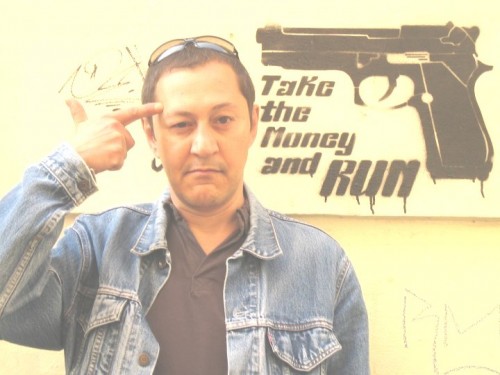

 del.icio.us
del.icio.us
 Digg
Digg![[Lecture] Contre l’Europe de Bruxelles – Fonder un Etat européen, par Gérard Dussouy](http://fr.novopress.info/wp-content/uploads/2013/04/dussouy_modifie-1.jpg)
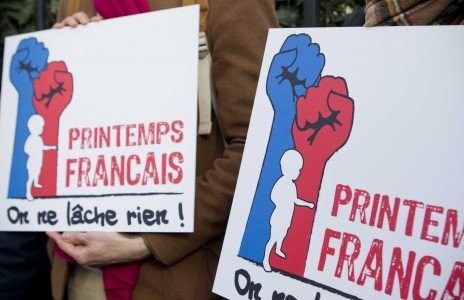
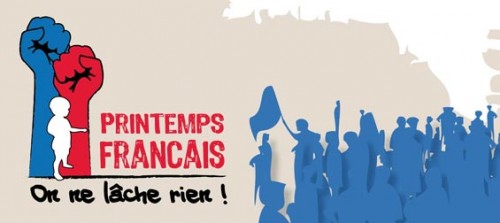

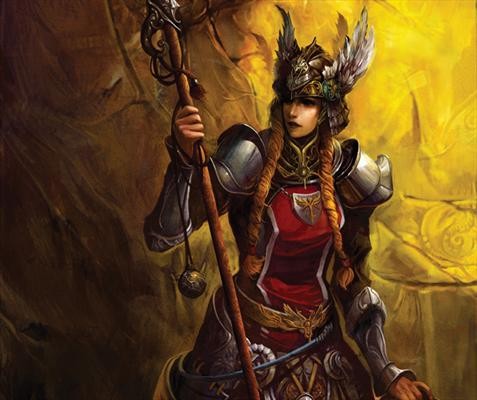

.jpg)

.jpg)
.jpg)
